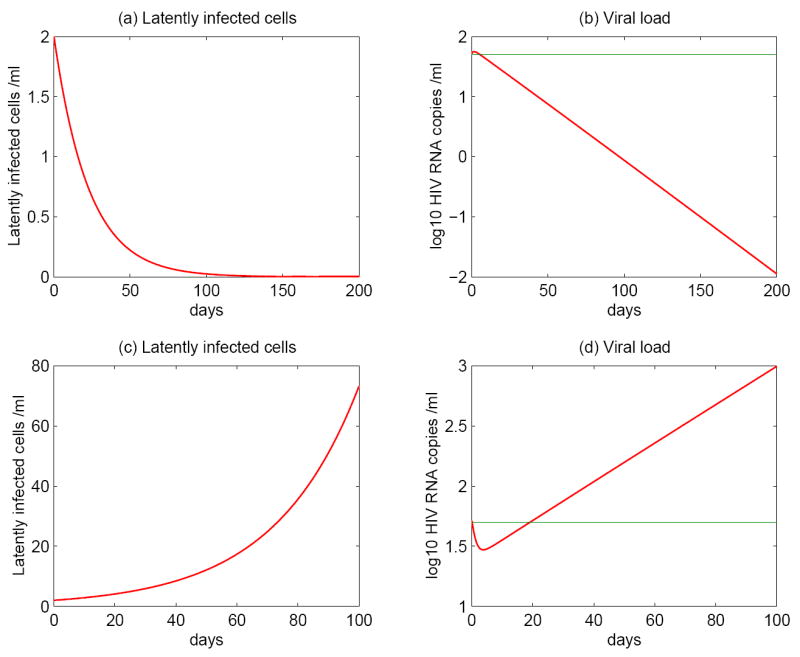Figure 4.

Numerical simulations of model (5) with asymmetric division of latently infected cells stimulated by persistent antigen. The top panels: latently infected cell and HIV-1 RNA levels with pL = 0.3. The renewal ability of latently infected cells is not good enough to maintain the latent reservoir. The model is sensitive to changes of the drug efficacy. Both activation from latent cells and ongoing viral replication cannot sustain the persistence of a low level of viremia. The bottom panels: the probability pL is 0.7. Because of the higher potential to replenish the latent cell pool, the size of the latent reservoir increases substantially. Consequently, the viral load cannot be suppressed to below the limit of detection. The other parameter values are chosen as in Table 1. The green line represents the detection limit of conventional assays, i.e., 50 RNA copies/mL.
